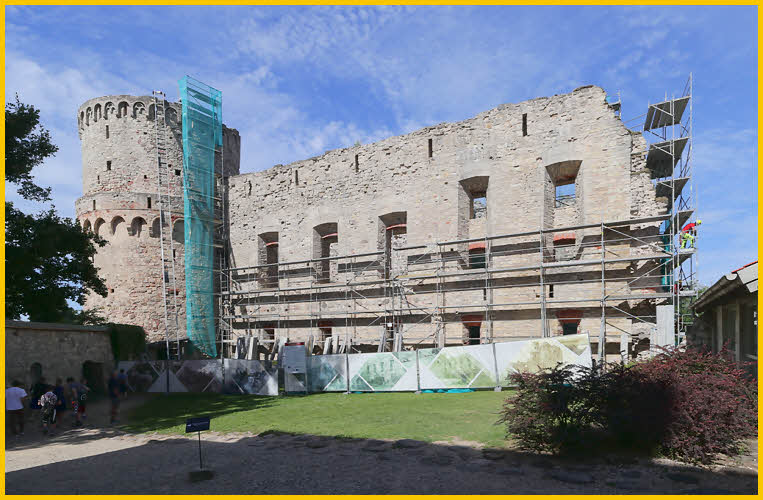Latvia
Cesis Castle
 |
Cesis Castle was the home of some of the greatest knights, warriors and masters of the medieval Livonian Order. This Order, also known in its beginning as the Livonian Brothers of the Sword, was a Latvian military order of crusaders, established by the Bishop Albert of Riga in the year 1202 with the aim to help with the conversion of the pagan inhabitants of the eastern costs of the Baltics to Christianity. At that time, this region was known as Livonia, which would be nowadays part of Latvia and Estonia.
The Castle of Cesis, also known as Wenden, was one of the headquarters of the brotherhood, along with other places in Estonia and Latvia such as the cities of Sigulda, Aizkraukle or Fellin. The Brotherhood started to build the castle near the hill fort in the year 1209. They managed to create a large, fortified castle that would serve as the home of the Brotherhood’s master of the time, and the ones to come in the future.
Despite their power and the support of the Christian world, the Livonian Brotherhood of the Sword was terribly defeated in the battle of Saule in 1236 against Lithuanians and Semigallians. Their numbers were so extremely reduced after the fight, that the surviving brothers had no other choice but letting the Livonian Brotherhood being absorbed by another, bigger order: the Teutonic Knights. However, they managed to maintain their autonomy and they became just a different branch of the Teutonic Order, which would get to be known from then on just as the Livonian Order, instead of the Livonian Brotherhood of the Sword.
Across the years to come, the beautiful castle would be destroyed and reconstructed on several occasions. During the Livonian War, a fight for the control of the Livonian area that involved Russia, Denmark, Norway, Lithuania, Sweden and Poland, the garrison destroyed the castle in order to prevent the Russian Tsar Ivan the Terrible to seize control of it. However, Ivan was defeated during the Battle of Wenden, named after the sacrificed castle, in 1578.
Shortly after, Cesis was to be invaded several times. The castle fell under the power of the Polish-Lithuanian commonwealth first, and under the Swedish crown later. The castle was again rebuilt, only to get partly destroyed again – who would have expected that by now? – by the Great Northern War in 1703, in which the Russian Army reduced the castle to ruins. After this tragedy, the castle wasn’t used anymore for military purposes.
